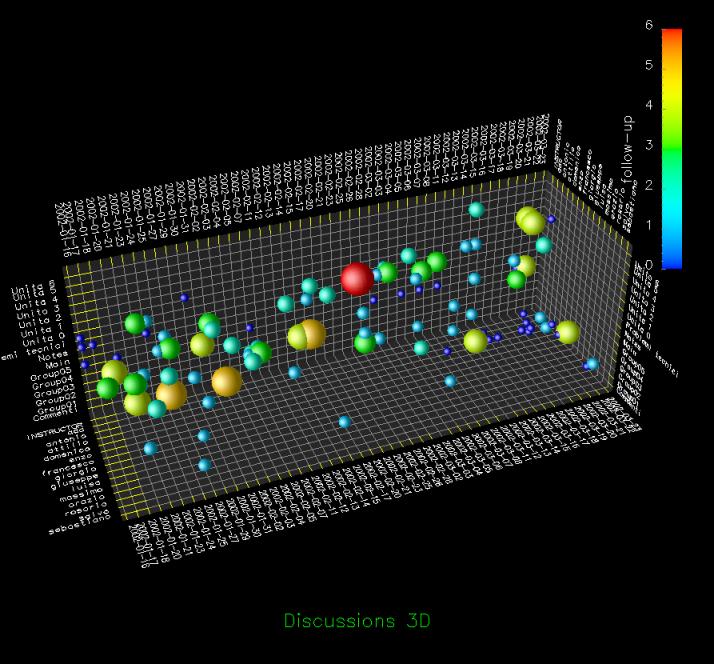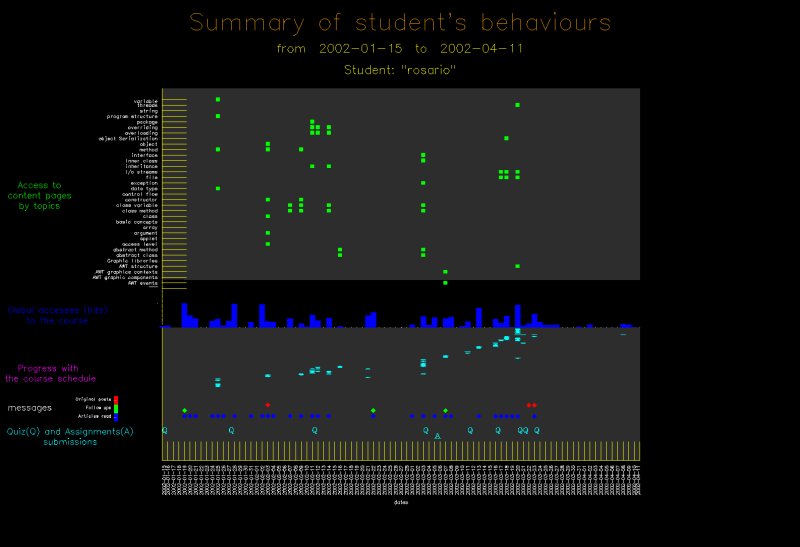Evaluating Information Visualization Applications: Difference between revisions
Jump to navigation
Jump to search
No edit summary |
|||
| Line 7: | Line 7: | ||
== Short Description == | == Short Description == | ||
== CourseVis == | |||
{{Quotation|[...] a novel approach of using web log data generated by course management systems (CMS) to help instructors become aware of what is happening in distance learning classes. Specifically, techniques from Information Visualization are used to graphically render complex, multidimensional student tracking data collected by CMS. A system, called CourseVis, illustrates the proposed approach.| [Mazza and Dimitrova, 2004]}} | |||
== Figures == | == Figures == | ||
'''Access Plot:'''<br/> | '''Access Plot:'''<br/> | ||
[[Image:Accessesplot.JPG|center|400px|Access Plot]]<br/> | [[Image:Accessesplot.JPG|center|400px|Access Plot]]<br/> | ||
Revision as of 19:52, 26 April 2007
Author
Short Description
CourseVis
[...] a novel approach of using web log data generated by course management systems (CMS) to help instructors become aware of what is happening in distance learning classes. Specifically, techniques from Information Visualization are used to graphically render complex, multidimensional student tracking data collected by CMS. A system, called CourseVis, illustrates the proposed approach.
[Mazza and Dimitrova, 2004]
Figures
Access Plot:

Discussion Plot:
This 3D scatterplot is about the disussions of the course. The figure shows time, topics and students.

Behavioural Graph:
This graph represents the behaviours of a single student.
It shows the student's access to the content pages, the global access to the course, a progress with the schedule of the course, messages and the submission of quizzes and assignments.

Important Citation
attitudes, feelings and beliefs ... are more likely to be revealed
via the social gathering and the interaction which being in a focus
group entails [A. Gibbs, 1997]
formulate and answer questions [users] didn’t anticipate having
before looking at the visualization
[C. Plaisant, 2004]